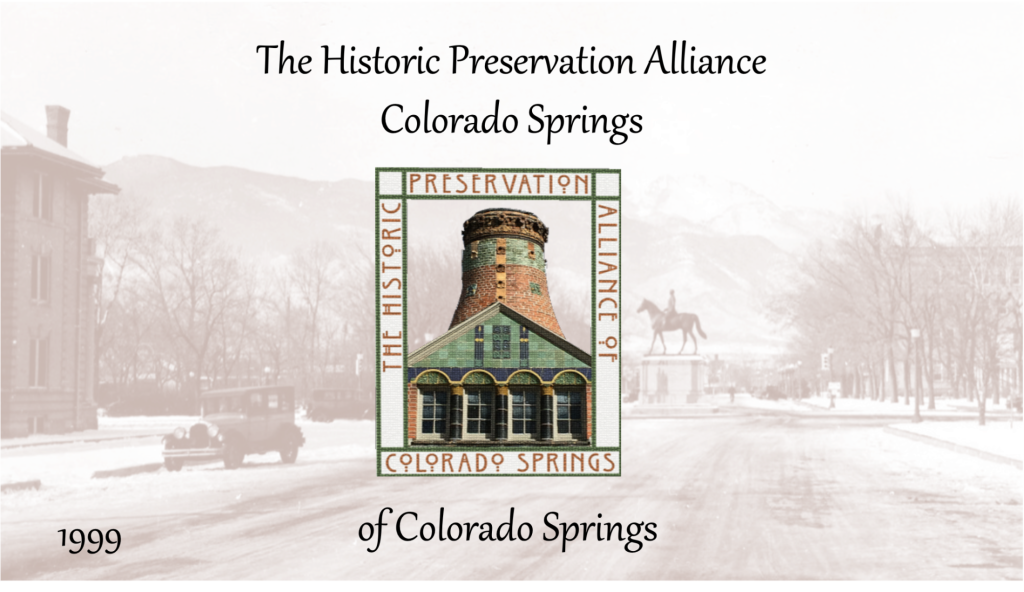Our Story: Historic Preservation and the ColoradoState Income Tax Credit
By John Gudvangen
Do you have any plans to remodel your Old North End home? The state of Colorado provides a significant incentive for Old North End neighbors to invest in the rehabilitation of their property as historic structures. The tax credit provides 20 percent of qualified rehabilitation costs up to a maximum of $50,000 in credits for each qualified property. For example, a property owner who invests $100,000 in qualified rehabilitation costs would receive $20,000 in Colorado income tax credits. You may carry these credits forward up to ten years.
Applying for the tax credit need not be an extra burden. The process can be a fun way for you to learn more about the historic nature of your property and about the history of the neighborhood. Most importantly, the tax credit can provide you with benefits that maintain and enhance the residential historic character of the Old North End, promote economic development, and increase the economic and historic value of your home.
The purchase of our Old North End home in 1998 was more a matter of convenience than a commitment to any historic property. We were a three-generation family looking for a Colorado Springs home where the old and the young could live together but still have our own living spaces. Our Cascade home was a perfect match. It provided an upstairs apartment for Grandpa, the first floor for us and the kids, and laundry and storage in the basement. An illness prompted us to look at renovating the house. Grandpa needed to move downstairs.
Our home had at least two major additions since it was built 1909. In the 1940s the grand staircase was removed and the new stairs were placed in a rectangular box addition on the side of the house. These stairs presented a safety hazard with narrow and irregular tread shapes, two 90° turns, and widely varying stair heights. The new 1940s stairwell had no match in design, materials, or appearance to the rest of the house, and the structure was poorly insulated. During the same 1940s remodel two bedrooms and a bath were added to the first floor.
An additional remodel in the 1970s created a large vaulted cantilevered family room at the rear of the house that was connected to the front of the house by the galley-style, hallway kitchen. This room was characterized by wood paneling painted over white, very simple or non-existent trim work, no baseboards, pile carpeting, aluminum slider windows and door, dimmable fluorescent lighting, skylights, a half-vaulted ceiling with painted beams, and grass wallpaper and swag-lamps in the half bathroom. It was a functional room but quite incongruous with the turn-of-century foursquare residential structure.
Our initial renovation plans were modest and paid no attention to the wonderful architectural features of a 1909 Cascade Avenue residence. The original house has full wood mantles, hardwood floors, one-foot baseboard trim, fully trimmed doors, and double hung windows. Our main step toward a more thoughtful and long-lasting renovation was enlisting the help of architect Lou Galletta. Lou provided an overall vision for an historic renovation that included reintegrating the 1940s stairwell into the house, and rehabilitating the family room into the historic character of the house. Bob McGrath of Bob McGrath Construction took great interest in the project and turned out a beautiful final project.
While the final project remained modest it accounted for the historic integrity of the home and the neighborhood. We replaced the unsafe and unsightly stairs with a solid oak structure that includes the original oak newel posts, balusters, and handrails. The bedroom and bathroom remodel restored the wood floors, provided a pocket door and a handicapped accessible bathroom, and replaced the louvered closet doors with original five panel wood doors. The 1970s family room now has wood trim throughout that matches the rest of the house and it includes a great coffered ceiling, wood floors, and double hung wood windows to replace the aluminum sliders.
The process for state tax credit approval is not cumbersome. We researched the home and the architectural history of the neighborhood at the local library. We had informative conversations with city planner Tim Scanlon. In addition to his knowledge of architectural history in Colorado Springs, Tim provides clear guidance to help property owners submit the preliminary and final proposals. Architect Lou Galletta provided excellent professional help and we had a sympathetic builder. We wrote our proposal and took pre-work photographs that we presented to the Minor Works subcommittee of the Historic Preservation Board. They conducted a site visit prior to the work commencing. When the project was completed we submitted post-work photos and a narrative to the subcommittee. They conducted a final site visit and approved our request for tax credits at their next regular meeting.
The state tax credit provided us with the incentive to research the historic character of our specific property and the properties in the neighborhood. We discovered that with a little more effort we could rehabilitate this old property in a manner that would provide meaning and value instead of another mismatched and poorly planned renovation. The prior additions paid no attention to style, quality, or integration. We ended up with a reintegrated single family home, but a home that still provides for the needs of a multi-generation household.
Tax credits are now handled at the state level. Further tax credit information is available at the State Office of Archaeology and Historic Preservation (OAHP) Tax Credit Information or contact Mr. Joseph Saldibar Architectural Services Manager Telelphone: 303-866-3741.










